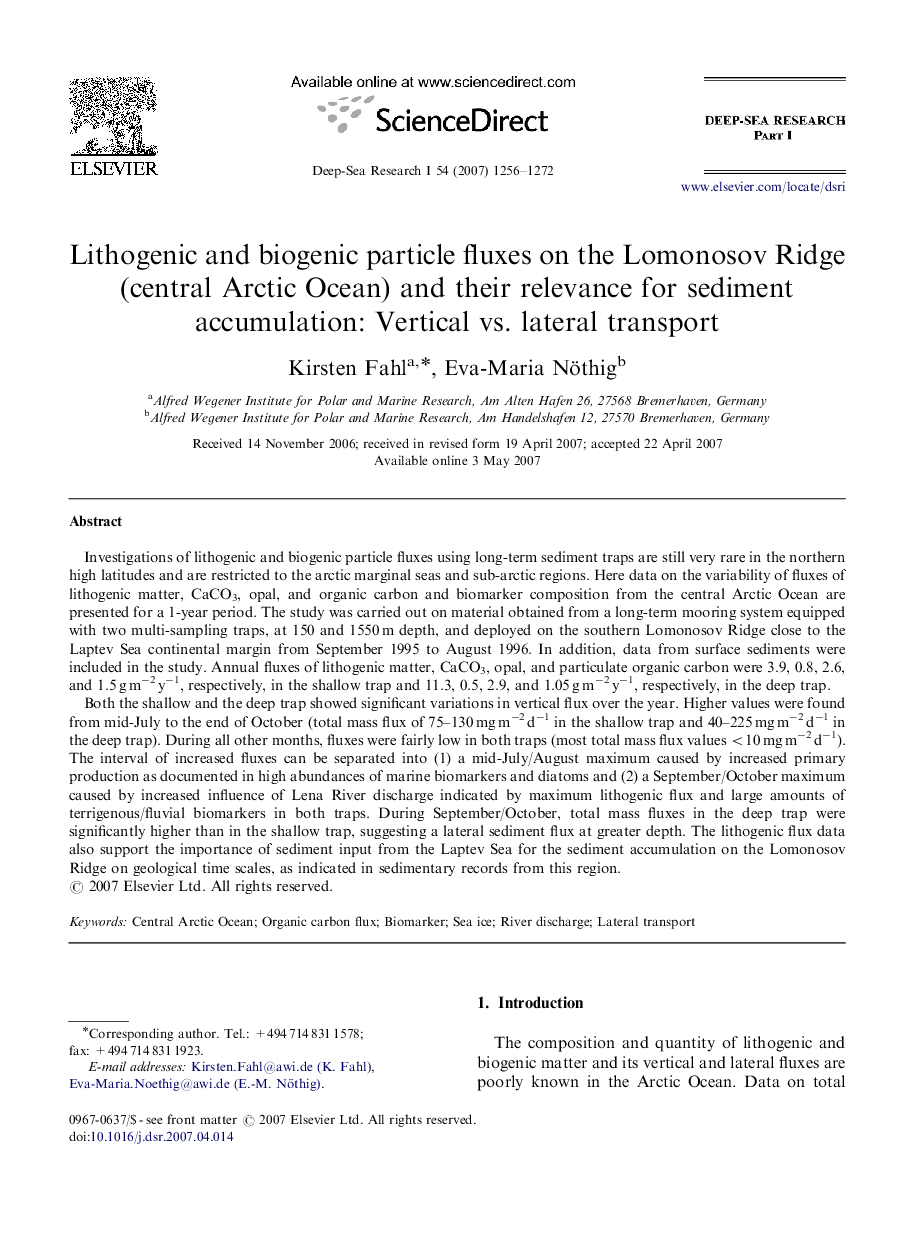| Article ID | Journal | Published Year | Pages | File Type |
|---|---|---|---|---|
| 4535359 | Deep Sea Research Part I: Oceanographic Research Papers | 2007 | 17 Pages |
Investigations of lithogenic and biogenic particle fluxes using long-term sediment traps are still very rare in the northern high latitudes and are restricted to the arctic marginal seas and sub-arctic regions. Here data on the variability of fluxes of lithogenic matter, CaCO3, opal, and organic carbon and biomarker composition from the central Arctic Ocean are presented for a 1-year period. The study was carried out on material obtained from a long-term mooring system equipped with two multi-sampling traps, at 150 and 1550 m depth, and deployed on the southern Lomonosov Ridge close to the Laptev Sea continental margin from September 1995 to August 1996. In addition, data from surface sediments were included in the study. Annual fluxes of lithogenic matter, CaCO3, opal, and particulate organic carbon were 3.9, 0.8, 2.6, and 1.5 g m−2 y−1, respectively, in the shallow trap and 11.3, 0.5, 2.9, and 1.05 g m−2 y−1, respectively, in the deep trap.Both the shallow and the deep trap showed significant variations in vertical flux over the year. Higher values were found from mid-July to the end of October (total mass flux of 75–130 mg m−2 d−1 in the shallow trap and 40–225 mg m−2 d−1 in the deep trap). During all other months, fluxes were fairly low in both traps (most total mass flux values <10 mg m−2 d−1). The interval of increased fluxes can be separated into (1) a mid-July/August maximum caused by increased primary production as documented in high abundances of marine biomarkers and diatoms and (2) a September/October maximum caused by increased influence of Lena River discharge indicated by maximum lithogenic flux and large amounts of terrigenous/fluvial biomarkers in both traps. During September/October, total mass fluxes in the deep trap were significantly higher than in the shallow trap, suggesting a lateral sediment flux at greater depth. The lithogenic flux data also support the importance of sediment input from the Laptev Sea for the sediment accumulation on the Lomonosov Ridge on geological time scales, as indicated in sedimentary records from this region.
